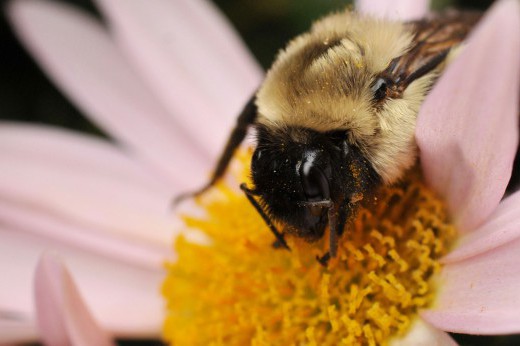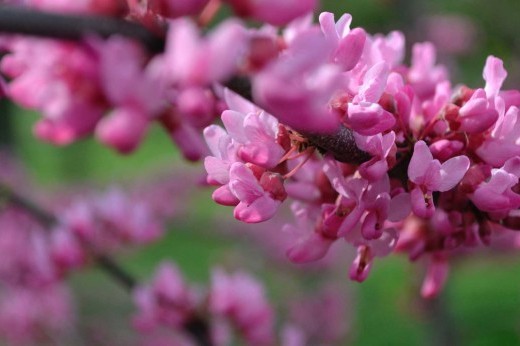When thinking recently about pollinators and trees, the first word that popped into my mind was intimacy. As with any close personal bond, the interactions between pollinators and their tree hosts are often hidden just above our sight lines. These ecological relationships represent a fascinating and crucial world—one that deserves a lot more attention.
When I talk about pollinators and their plants, most people automatically think about herbaceous plants and gardens. But trees are an important part of the equation, too. So what are all those pollinators doing up there?
Some are resting or hibernating under bark and in the leaf litter below (don’t throw away those leaves!), or hiding in plain sight, like sphinx moths, whose camouflage evolved over thousands of generations. Others are eating leaves, staying dry under leaves, weaving leaves together, or hanging from stems to pupate. They’re also reproducing—in vast numbers. That’s a good thing, because a small bird like the chickadee needs to feed its babies up to 500 caterpillars a day. Baby birds depend on caterpillars over other insects; they are soft-bodied, highly fatty, and protein-filled.
Many pollinators are specialists that have evolved to depend on particular tree hosts. One conspicuous and lovely example in Eastern North America is the Eastern tiger swallowtail. Though we often see the adult butterfly on perennial flowers, its habitat is deciduous woodlands in which the major food plants for its young are the wild black cherry and tulip tree.
The genus Quercus (oak) supports a vast array of pollinators, from butterflies and moths to wasps, flies, beetles, and bats. Ecologist and author Doug Tallamy and his colleagues have taught us that oaks alone host over 500 species of Lepidoptera (butterflies and moths).
Just as trees are important for pollinators, pollinators are vital for trees. Many trees need wild pollinators to reproduce. Though honeybees, a nonnative agricultural species, get a lot of attention, plenty of our wild bees are great—or even better—at pollinating food plants like fruit trees. In the forest, beetles pollinate tulip trees, while flies and specialist bees pollinate flowering dogwoods and black cherries. Spicebush is pollinated by solitary bees, lady beetles, and flower flies.
Trees are not just outdoor furniture. We need them, and they need us. They are a necessary part of healthy ecological landscapes, and by supporting trees, we support the web of life around them. So what can community members do? Plant them, care for them, and water them! Climate change is presenting us with drought periods that will have serious impacts on plants and wildlife. Where we have access to water, we can help.
Look to Brooklyn Botanic Garden and the New York City Parks Department for opportunities to volunteer, and check out Forest for All NYC to learn more about local efforts to support the urban forest. Our community needs so many more people to eliminate spotted lanternflies, pull invasive plants, and care for street trees. An army of citizens is needed to help NYC adopt a practical urban forest agenda and achieve its goal of 30 percent tree cover by 2035.
Lastly, make some time to get to know trees and their pollinators. Get out and visit them. New York City has plenty of beautiful options in our botanic gardens, parks, and cemeteries. The work can begin with one tree. Hidden under the leaves, behind the stems and in the cracks of the bark, is a world of intimate proportions just waiting for you.



